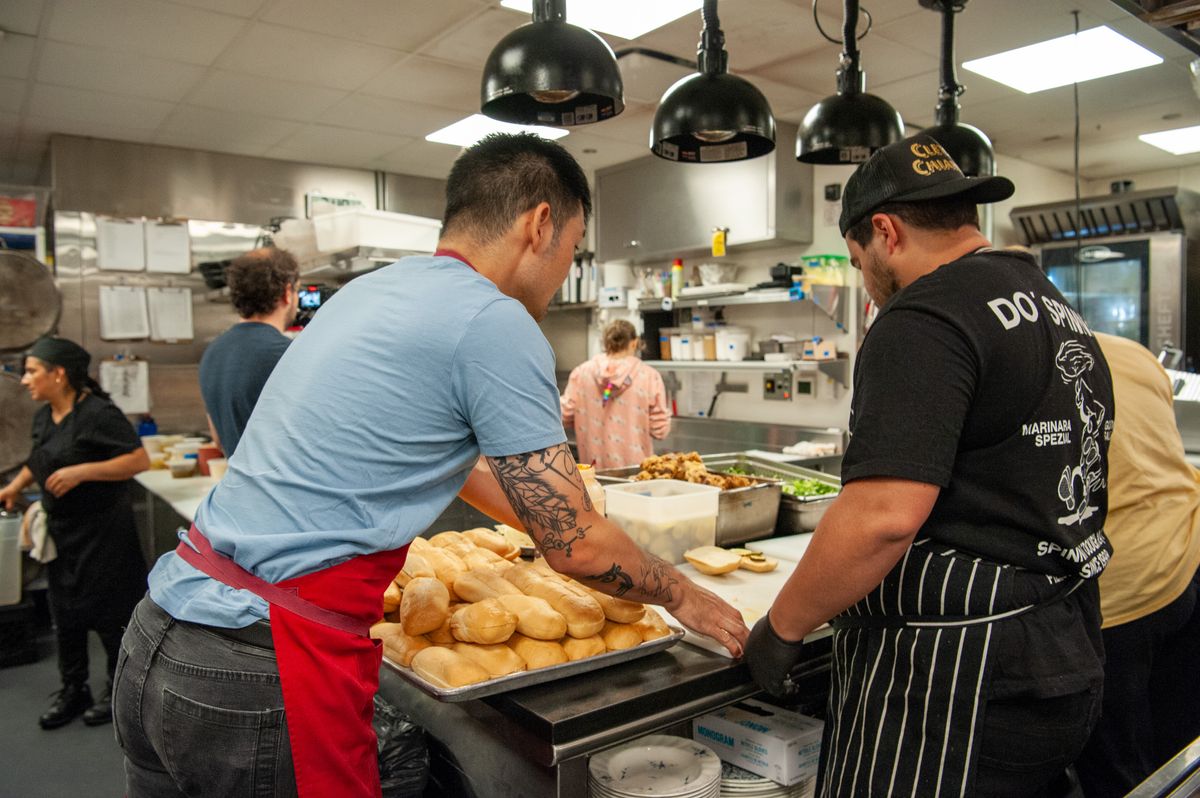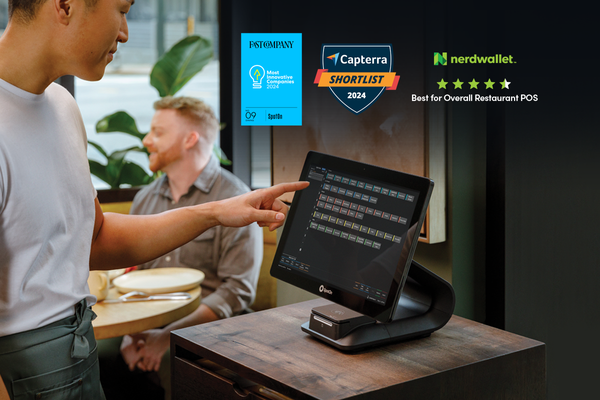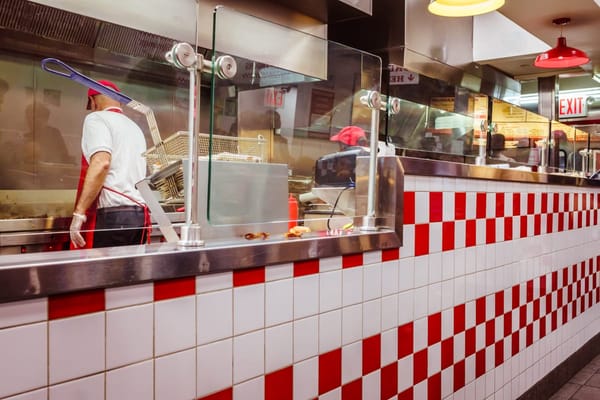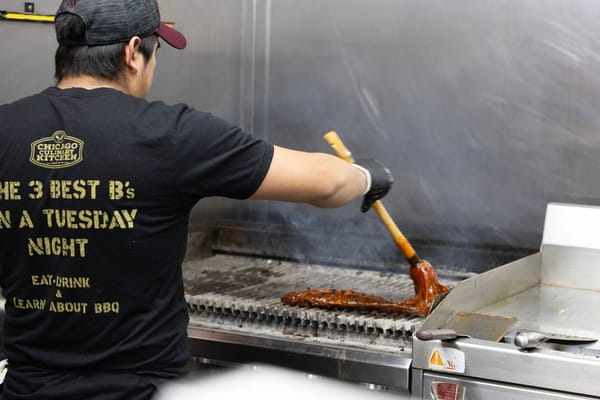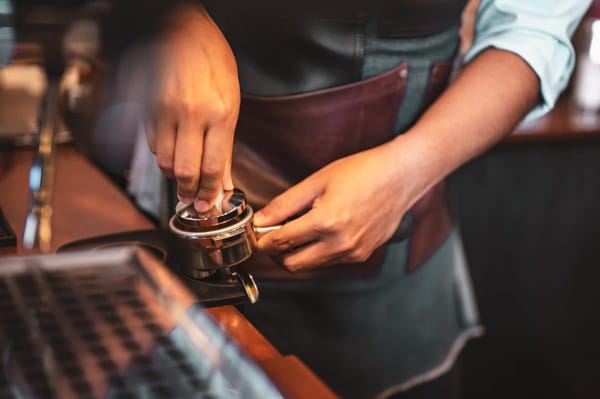Your table-turns are on point. Reservations are booked weeks in advance, and no-shows are rare. Your servers are knowledgeable, friendly, and possess a sixth sense for knowing when it’s time for another round. And yet, your profits are stagnant. What gives?
As a former restaurant operator, I know from experience how frustrating it can be to feel like you’re firing on all cylinders but not seeing the impact. Another thing I learned: it’s worth taking another look at the back-of-house. In most restaurants, no one works harder (often for less recognition) than your back-of-house staff. That’s why giving your kitchen team tools to make them more efficient is so essential. It not only makes their lives easier—improving back-of-house operations trickles down to make your whole restaurant operate more smoothly.
So, if you want to improve communication, accelerate throughput, and increase profits, here are some ideas to tune-up your back-of-house operations. Knife sharpener not included.
1. Assess the situation
Before you can start brainstorming new processes, be a fly on the wall. Stand at the end of the line, or just over the expo’s shoulders and simply watch the organized chaos that is your kitchen. Is one person yelling all the orders? Are cooks passing tickets back and forth? Are there tickets scattered on the floor? Is the team working on the same orders together and executing dishes simultaneously, or is one station a few minutes behind?
You’ll be surprised how quickly you can identify roadblocks in your current operation with 30 minutes of observation. Time a few orders from start to finish and take note of the roadblocks to pinpoint areas of opportunity.
2. Dig into the details
Burgers with double bacon, muenster cheese, no lettuce, ketchup on the side, and a pretzel bun. Say that ten times fast. With a restaurant POS that integrates with your kitchen display system, you don’t have to. Your kitchen staff gets accurate, easy-to-read order information on the screen in front of them. No more lost or greasy tickets. No more confusing abbreviations or scrawled handwriting. You can guarantee that you’re getting the right order with the right modifiers—and no remakes.
Even if your operation adheres to a “no substitutions” rule, giving your kitchen a detailed and accurate view of the order helps decrease friction when it comes to allergies and other unique customizations. Plus, by holding the onions, you’ll decrease the food waste that eats into your profit margins.
3. Ditch the printer
Kitchen printers are needy. You’re spending a lot of money on very specific rolls of paper and ink (and heaven forbid you grab the thermal paper, and the ink disappears above the grill station). You’re spending precious time during peak service unplugging and plugging in an unruly machine that chooses when it does and does not want to work. My best advice? Say goodbye.
I have used a KDS in a variety of different concepts and I have never thought to myself, “Wow, I’d love to go back to using a printer.” A KDS streamlines kitchen operations in a way that goes beyond digitizing a printer. On top of that, it’s a relief to know you don’t have to worry about ink levels running low ever again. Imagine a world with no more paper jams. It’s possible.
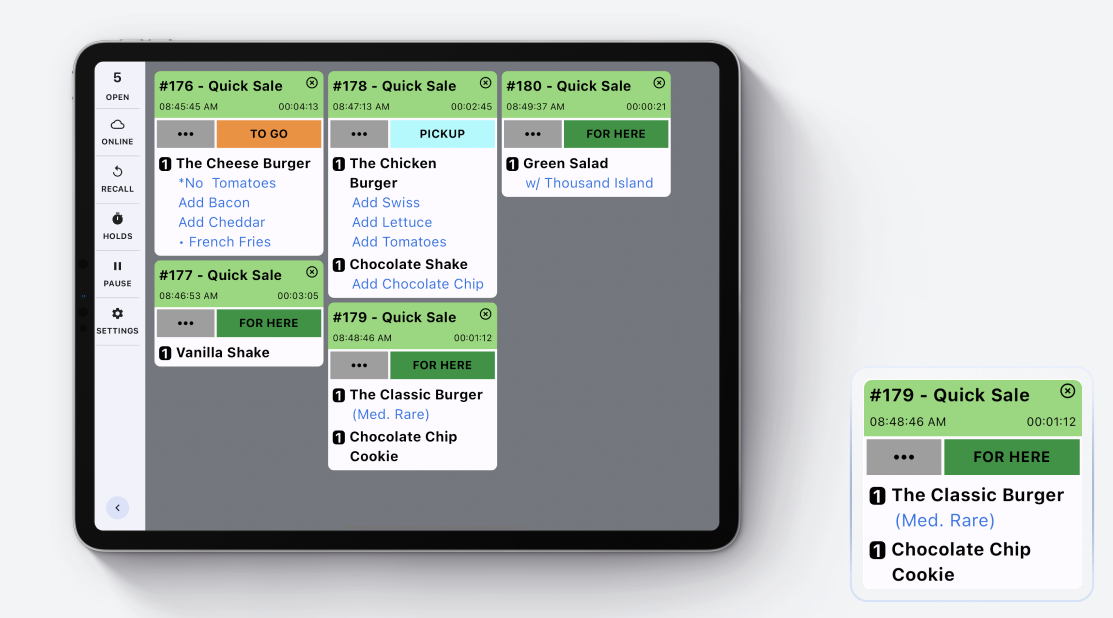
4. Keep everyone in the loop
While not everyone might literally speak the same language, your entire team needs to be figuratively speaking the same language. Plus, they need to get their messages out there at hyperspeed, all at the same time. It’s a lot to ask of your team members, who are already trying to do more with less.
You can save time and energy by letting your front-of-house staff send real time order updates to the back-of-house with a great POS to KDS integration. No more yelling over sizzling flank steaks or mishearing a last-minute modification. Your back-of-house team members can immediately let servers know when a dish is ready for serving, or even text the pickup guest an update (see #7 for why this matters!). When your entire team can communicate more efficiently, their jobs become easier and your guests become the big winners.
5. Keep an accessible record
We had a live fire grill at Von Elrod’s. As soon as our grill guy was done with the tickets, rather than throwing them in the garbage can, he would chuck them in the fire. I said to him, “What if you needed to reference that ticket? What if that one wasn’t done?” Live fire grill aside, we’ve all had to go hunting for a ticket that found its way into the garbage a moment too soon.
On a KDS, you can just hit “recall” and, boom, there’s the check again. It’s huge for helping your back-of-house team combat potential errors, and essential for general managers trying to make service flow smoothly.
6. Measure success
With an accessible record of completed tickets, you can also start to measure success and determine what could really help you move the needle in terms of kitchen throughput. If you’re an owner or GM, you can get great reporting on how long your food is taking to come out of the kitchen. You can compare your Tuesday shift versus your Thursday shift.
If you see a huge change in how fast your food is coming out of the kitchen, you can get metrics on your line team and see that when Joe is working, your kitchen runs two minutes faster. From there, you can start to understand what Joe is doing to make things run faster, and how Bobby, Jack, and Teddy can replicate that strategy.
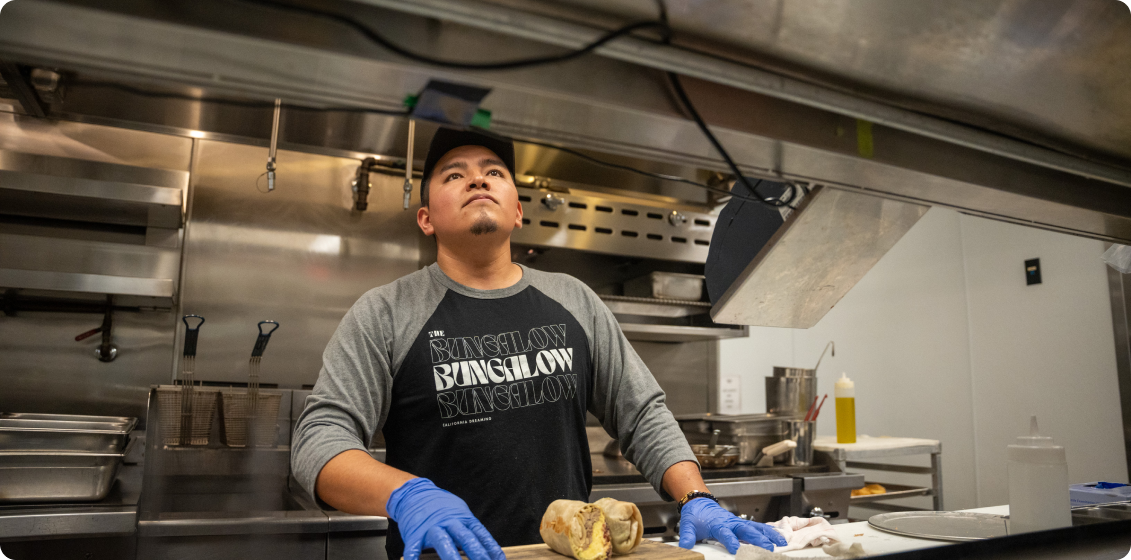
7. Automate notifications
Any time you can remove the middleman, it’s a big win for your operation. If you have implemented a restaurant online ordering system, a kitchen display system will text your customers when their order is ready, as well as updates when their order is received and in-progress.
This takes pressure off of the front-of-house or host, freeing them up to focus on other tasks. Plus, it turns online orders into an easier lift for the back-of-house, with clearer labels, different colors, or a clearly segmented screen rather than looking for one line of red text to indicate take-out. I’m personally a huge fan of a split-screen view when you’re fulfilling a lot of to-go orders. No one wants to waste time transferring food from plate to a to-go box or vice versa as a result of a misread ticket.
8. Stay flexible
Sometimes, you need to change your whole operation on a dime in order to maintain efficiency. Sudden staffing changes, equipment breakdowns, and other curveballs can threaten your entire shift if you (and your staff) don’t stay on your toes.
No matter what service looks like, a kitchen display system can help your kitchen stay nimble. Flexible views and customizable screens help you route items to different stations and tailor what each kitchen station can see. Every screen can have unique settings, unlike kitchen printers where you’re limited to single-view printed tickets that can’t be modified on-the-fly.
Back-of-house efficiency is important to your operation. But there’s something that matters more—that’s the wellbeing of your staff. In my experience, we saw a decrease in stress (alongside an increase in efficiency) for line cooks using a kitchen display system in place of a kitchen printer. There was no longer the negative emotions associated with the whirring sound of printing tickets. They weren't worried about missing orders or modifiers. They didn’t have to stop cooking to pick up pieces of paper. They achieved a nice, smooth flow. A kitchen printer? Could never.
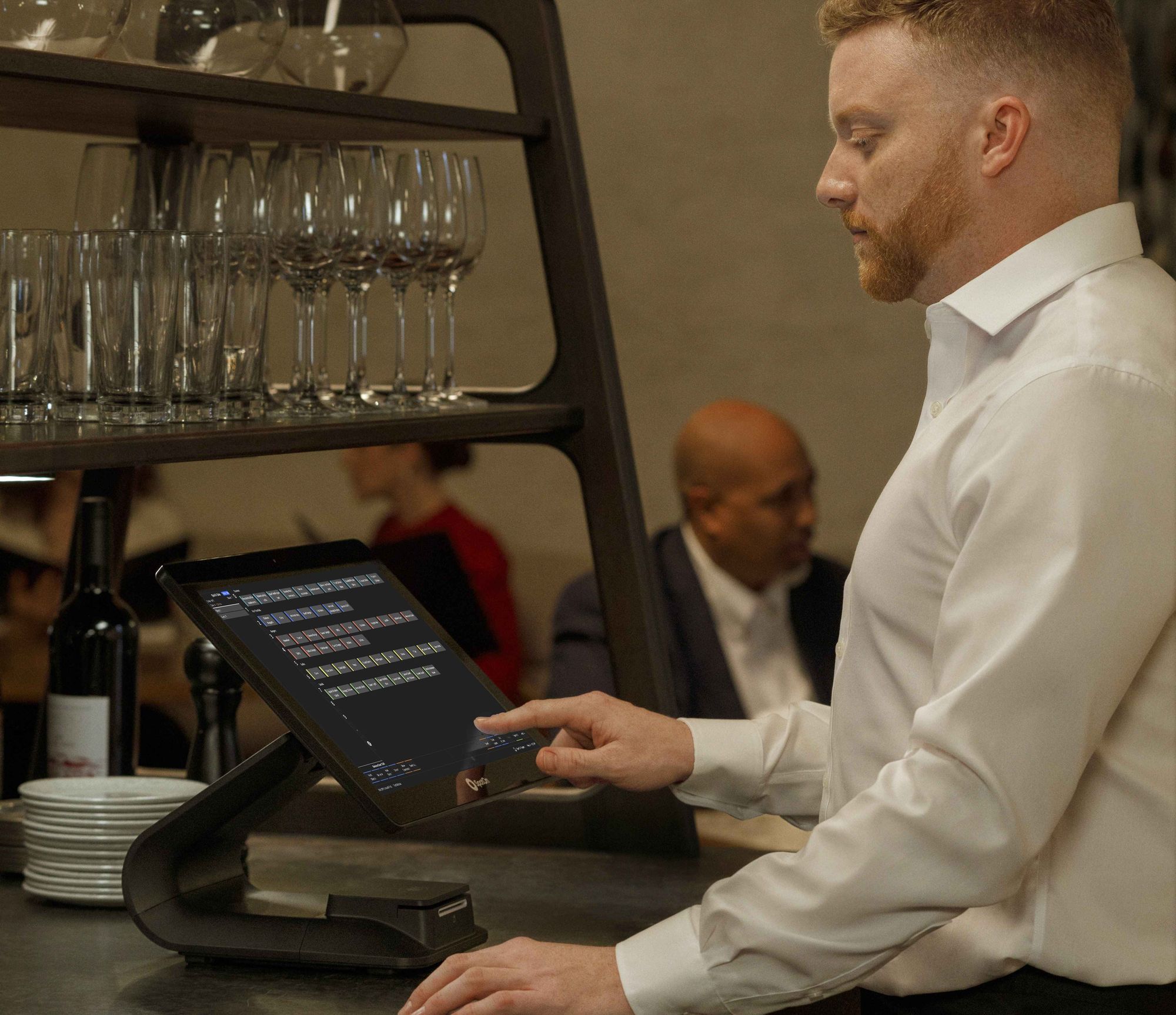
Let's see how we can help
Meet one-on-one with one of SpotOn's tech experts. No high-pressure sales tactics. Just a casual conversation to find out if we make sense for your restaurant.
About the author
Hillary Holmes has over 20 years of success in the restaurant and hospitality industry, including as General Manager at Von Elrod’s Beer Hall & Kitchen.


